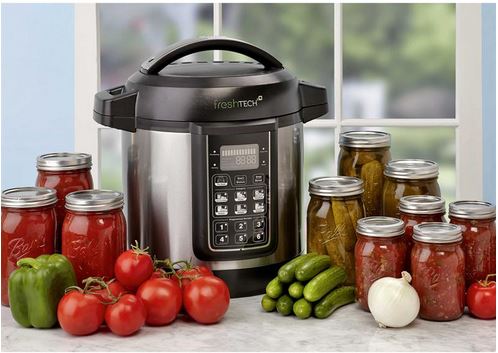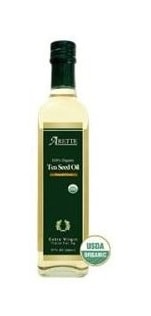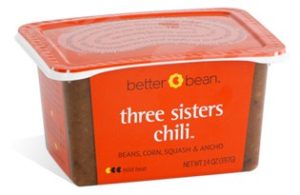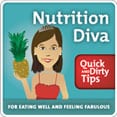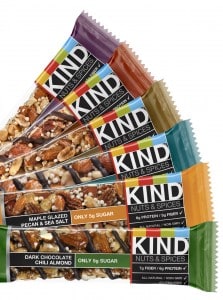 My primary complaint with most granola and snack bars is that they’re all so high in sugar (or, in the case of the low carb bars, high in fake sugar). It’s not merely a nutritional objection; I find most of them unpleasantly sweet. So I was intrigued to learn about a new line of bars and granola from KIND, each with 5 grams of sugar or less–no artificial sweeteners or sugar alcohols.
My primary complaint with most granola and snack bars is that they’re all so high in sugar (or, in the case of the low carb bars, high in fake sugar). It’s not merely a nutritional objection; I find most of them unpleasantly sweet. So I was intrigued to learn about a new line of bars and granola from KIND, each with 5 grams of sugar or less–no artificial sweeteners or sugar alcohols.
In a perfect world, of course, we’d all make all of our food from scratch–even our granola and energy bars! [<== my recipe]
But, there’s no denying the convenience of ready-made meals and snacks, especially when schedules are tight. In my last book (Secrets for a Healthy Diet), I devoted an entire chapter to how to select the best packaged food options–and leave the rest on the shelves. If these KIND Nuts & Spices bars had been around then, I would have singled them out as an great example–because they meet all of my criteria.
1. The ingredient list reads like a recipe, not a chemistry experiment.
2. They pack a decent amount of protein.
3. They’re low in sodium, high in potassium.
3. They’ve even got as many grams of fiber as sugar. (That one rule of thumb knocks virtually every other bar out of the running.)
Despite–or maybe because of!–all that, they taste really good. Like nuts and spices and grains. (Thanks to KIND for sending some samples my way).
Folks, you won’t find many product reviews on this site because I don’t like most of the products I’m asked to review. But I found these little bars to be pretty impressive–and worth passing along. If you’re looking for a ready-made granola or energy bar, these come pretty darn close to the stuff you’d probably make if you had the time. (Actually, in terms of sugar, they’ve got my homemade snack bars beat by a mile.) Just be sure you look for the ones marked “only 5 g sugar” on the front. The product line also includes some bars that are quite a bit sweeter and stickier.

